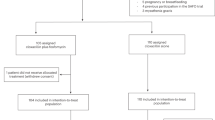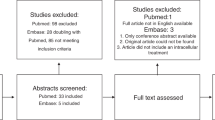Abstract
Replying to: W. Balemans et al. Nature 462, 10.1038/nature08667 (2009)
Our studies led us to conclude that growth of major Gram-positive pathogens, including Staphylococcus aureus, is not inhibited by FASII-targeted antibiotics in septicaemic infection, owing to compensation by serum fatty acids1. The comments of Balemans et al.2 challenge the generality of our results, mainly on the basis of their own work, which is aimed at developing FabI inhibitors for treatment of S. aureus infections. Their allusion to the documented use of FASII inhibitors to treat mycobacterial infections is misleading. Mycobacteria were not considered in our study, because (1) their main route of pathogenesis is not sepsis, and (2) they require mycolic acids for normal growth, which are lacking in serum. The results we present here further reinforce the conclusions of our article.
Similar content being viewed by others
Main
To assess directly the conclusions of Balemans et al. about the use of S. aureus FabI as an antimicrobial target, we performed experiments using the same system. S. aureus strain RN4220 was pre-grown in Todd Hewitt medium (TH) or in TH + 0.015% linoleic acid (C18:2; prepared from 0.15% stock in 5% bovine serum albumin). Overnight cultures were diluted in the respective media, and divided into two aliquots, either without antibiotic, or with 4 μg ml-1 triclosan (FabI-specific inhibitor3), and further incubated for 12 hours. As expected, no growth was obtained in the TH culture containing triclosan. Fatty-acid profiles of whole-cell extracts of the remaining cultures (TH, TH + C18:2 and TH + C18:2 + triclosan) were determined by gas chromatography and bacteria were counted (Fig. 1). Pure C18:2 used as control produced a single gas chromatography peak (blue line). S. aureus grown in TH (black line) generated a complex profile that lacks C18:2. In contrast, C18:2 is prominent in the complex fatty-acid profile of cells grown in TH plus C18:2 (green line). Significantly, C18:2 appears to be used as a substrate on which to synthesize new fatty acids: C20:2 and C22:2 (arrows). When C18:1 is added to cultures instead of C18:2 (results not shown), the synthesized products were C20:1 and C22:1. This shows that S. aureus incorporates exogenous fatty acids, as suggested from previous studies4,5. Moreover, the fatty-acid profile displays the exogenously added fatty acids, as well as endogenous fatty acids, consistent with continued fab gene expression in S. aureus, as determined by Balemans et al.2 (their figure 1a).
S. aureus RN4220 was grown overnight in TH medium, or in TH medium containing 0.015% C18:2. Cultures were diluted 1:100 in the same media. Each culture was then divided into two equal parts, and triclosan (4 μg ml-1 final concentration) was added to one aliquot of the TH culture, and one aliquot of the TH + C18:2 culture. After 12 hours, whole-cell fatty acids were analysed by gas chromatography. Profiles show the pure C18:2 control (blue line), and S. aureus grown in TH (black line), in TH + C18:2 (green line) and in TH + C18:2 + triclosan (red line). We note that S. aureus grown in C18:2 (green line) shows de novo synthesis of two novel peaks (arrows), corresponding to C20:2 and C22:2. Growth is given as the colony-forming units of the three analysed cultures.
When triclosan is added to the S. aureus culture grown in TH plus C18:2 (red line), fatty-acid synthesis is blocked: the C18:2 peak is still prominent, but peaks corresponding to fatty acids synthesized by S. aureus are strongly diminished. The C18:2-derived peaks, C20:2 and C22:2, are not detected. We concluded that triclosan reaches its target in the presence of fatty acids, and blocks bacterial fatty-acid synthesis. Bacterial counts (colony-forming units) show that FASII inhibition by triclosan does not stop S. aureus growth when exogenous C18:2 is provided. Similar results were obtained when cerulenin was used rather than triclosan, or when oleic acid or 100% serum was used as exogenous fatty acids (not presented).
These new results prove that FASII-directed antimicrobials can indeed reach their targets when exogenous fatty acids are present, to inhibit fatty-acid synthesis in S. aureus. However, FASII inhibition is compensated by the exogenous fatty acids, and allows bacterial growth. These results strengthen our initial hypothesis, and its relevance for S. aureus. Importantly, we succeeded in obtaining a confirmed S. aureus fabI deletion mutant by maintaining bacteria on a fatty-acid source throughout construction steps (S.B., G.L., C.P., A.G. and P.T.-C., manuscript in preparation). These findings further substantiate the generality of our study, and support our conclusions that the antibacterial activity of FASII inhibitors would be compromised in the treatment of S. aureus septicaemic infections.
References
Brinster, S. et al. Type II fatty acid synthesis is not a suitable antibiotic target for Gram-positive pathogens. Nature 458, 83–86 (2009)
Balemans, W. et al. Essentiality of FASII pathway for Staphylococcus aureus . Nature 462, 10.1038/nature08668 (this issue)
Heath, R. J. & Rock, C. O. Fatty acid biosynthesis as a target for novel antibacterials. Curr. Opin. Investig. Drugs 5, 146–153 (2004)
Altenbern, R. A. Cerulenin-inhibited cells of Staphylococcus aureus resume growth when supplemented with either a saturated or an unsaturated fatty acid. Antimicrob. Agents Chemother. 11, 574–576 (1977)
Weerkamp, A. & Vogels, G. D. Physiological conditions affecting Staphylococcus aureus susceptibility to staphylococcin 1580. Antimicrob. Agents Chemother. 13, 146–153 (1978)
Author information
Authors and Affiliations
PowerPoint slides
Rights and permissions
About this article
Cite this article
Brinster, S., Lamberet, G., Staels, B. et al. Brinster et al. reply. Nature 463, E4 (2010). https://doi.org/10.1038/nature08668
Issue Date:
DOI: https://doi.org/10.1038/nature08668
This article is cited by
-
Staphylococcus epidermidis biofilm assembly and self-dispersion: bacteria and matrix dynamics
International Microbiology (2023)
-
Environmental fatty acids enable emergence of infectious Staphylococcus aureus resistant to FASII-targeted antimicrobials
Nature Communications (2016)
Comments
By submitting a comment you agree to abide by our Terms and Community Guidelines. If you find something abusive or that does not comply with our terms or guidelines please flag it as inappropriate.




